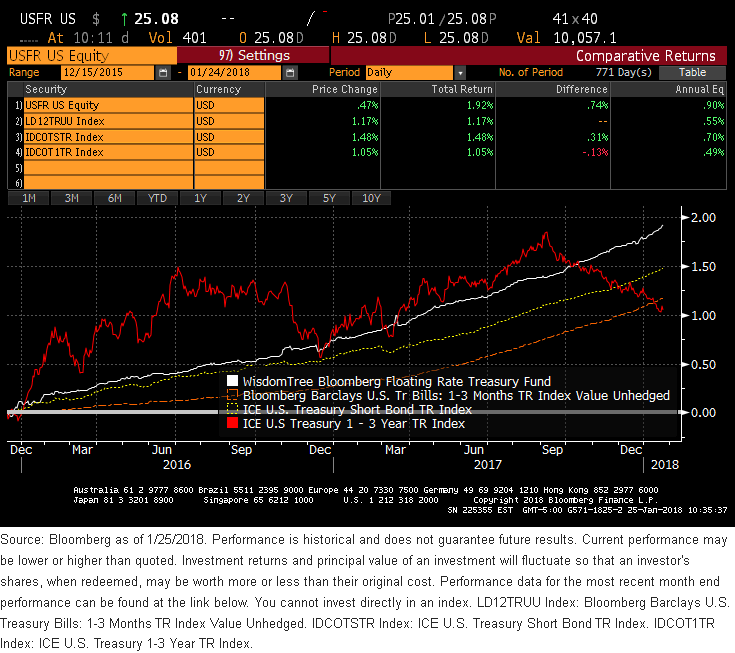One down, seven more FOMC meetings to go after today. There’s no doubt, as 2018 progresses, that the money and bond markets will be wrestling with their Federal Reserve (Fed) rate expectations, an annual rite that has now been taking place since December 2015, when the policy makers began the current hiking cycle. In addition, investors have discovered that Fed rate hikes don’t necessarily impact all Treasury maturities in the same way. In our opinion, instead of “fighting the Fed,” investors should embrace the potential for additional rate increases this year—and possibly into 2019—and prepare their fixed income portfolios accordingly.
That being said, fixed income investors more often than not utilize short-duration strategies when the expectation is for higher interest rates. In other words, funds could be reallocated from intermediate to longer-dated maturities and reinvested into shorter-dated instruments. Some of the more widely used options involve U.S. Treasury securities such as T- bills, or a focus on the 1–3-year T-note sector.

However, what if there was an even more optimal strategy? We believe there is an alternative approach investors should explore: floating rate products. Investors looking to mitigate potential interest rate exposure may wish to examine the benefit of floating rate Treasury notes (FRNs). The U.S. Treasury began issuing two-year FRNs in January 2014. The yield is reset weekly based on a reference rate that is determined at the weekly three-month Treasury bill auction. As a result, they have the potential to reset interest rates more frequently as short-term yields drift higher. The WisdomTree Bloomberg Floating Rate Treasury Fund (USFR), which seeks to track the price and yield performance of the Bloomberg U.S. Treasury Floating Rate Bond Index, offers investors a vehicle to follow this type of strategy.
It should be noted that other floating rate vehicles also exist, but they typically include corporate credit in the mix, and this corporate exposure often comes from the financial sector. So, an investor may be buying a rate-structured instrument to hedge against higher rates, but in the process, they could also be adding more financial sector exposure to their overall portfolio. USFR contains no corporate exposure and consists only of Treasuries.












Leave A Comment